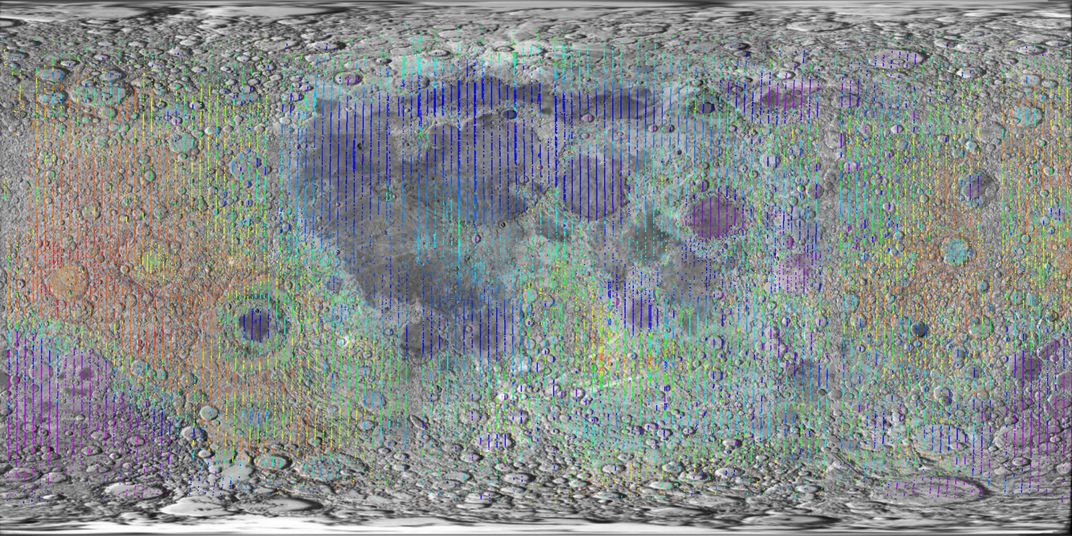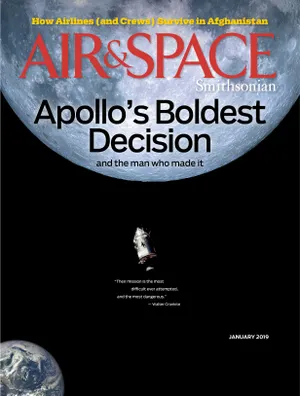Clementine Pointed the Way to a Lunar Return
In the 1990s, this modest lunar orbiter found out what the moon is made of.
/https://tf-cmsv2-smithsonianmag-media.s3.amazonaws.com/filer/88/d9/88d9ced8-1c44-44e5-bb0e-5d64ae4d4935/16b_dj2019_clementinemodel_nasm-2006-25314_live.jpg)
More than 500,000 people watched as Apollo 17, the last crewed mission to the moon, blasted off from Kennedy Space Center on December 7, 1972. When a U.S. probe returned to the moon 20 years later, hardly anyone noticed. The Clementine spacecraft, launched from Vandenberg Air Force Base on January 25, 1994, started as a Department of Defense project. Its miniaturized sensors had been developed for President Ronald Reagan’s Strategic Defense Initiative (known as “Star Wars”) to detect and track missiles but, with NASA participation, also proved valuable to science.
The science objective of the Clementine project (so named because the probe carried just enough fuel to complete its mission before it was “lost and gone forever,” like the lyrics of the 1884 folk ballad) was to assess the moon’s mineral composition and that of the near-Earth asteroid 1620 Geographos. (An onboard computer glitch prevented the asteroid flyby.)
In 2002, the Naval Research Laboratory, Clementine’s builder, transferred the spacecraft engineering model to the National Air and Space Museum, where it is on view at the Steven F. Udvar-Hazy Center in northern Virginia awaiting conservation work. The spacecraft created the first global topographic map of the moon and represents a 1990s ethic of “faster, better, cheaper” space exploration. Only two years in development, the probe cost under $80 million, about one-fifth the cost of a traditional space probe mission. Part of Clementine’s purpose was to evaluate the performance of commercial, off-the-shelf computers and software in space.
Scientists hoped that the lunar mapping project would show evidence of water ice on the moon, something needed to make an eventual lunar colony feasible. As Paul Spudis—then deputy leader of the Clementine Science Team—wrote in 1996, scientists couldn’t find water-bearing minerals in the rocks and soil samples brought back to Earth by the Apollo astronauts. But scientists speculated that water-rich comets and asteroids could have crashed into the moon. While most of the water would be lost into space, some might have stayed in the moon’s cold and dark polar regions.
Using seven different types of cameras, a laser altimeter, and a charged particle telescope, the spacecraft spent two months mapping the moon. By the time the project was complete, almost 2 million images were taken—documenting nearly 100 percent of the moon’s surface.
During the mapping, images of the South Pole-Aitken basin were taken, revealing that it may be the largest and deepest impact crater in the solar system. But most important of all, Clementine’s data indicated the presence of ice in the crater, findings that have been confirmed by subsequent space probes.
“It is probably not too much of an exaggeration to say that Clementine changed the direction of the American space program,” Paul Spudis wrote for Air & Space in 2014. “Because Clementine had documented its strategic value, the moon once again became an attractive destination for future robotic and human missions.”
The original analysis of the Apollo rocks turned out to be incomplete. In 2008, geochemist Erik Hauri, using instruments he developed, did find water in the Apollo 17 samples. Hauri died this past September. His work affirmed the intriguing possibilities found in Clementine’s data.
Clementine’s template influenced spaceflight for the next 20 years. It led the way for Lunar Prospector, which detected further evidence of ice at the poles, and LCROSS, which discovered water molecules on the moon and, in a dramatic experiment, flew through the ejecta created when its Centaur upper stage crashed into the moon, detecting pure water ice crystals, before itself smashing into the moon.

